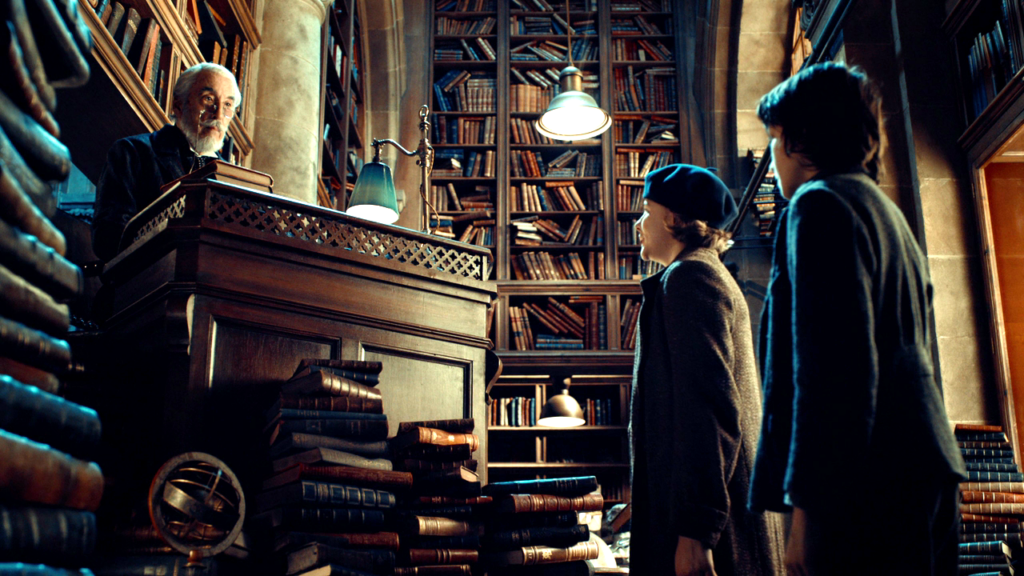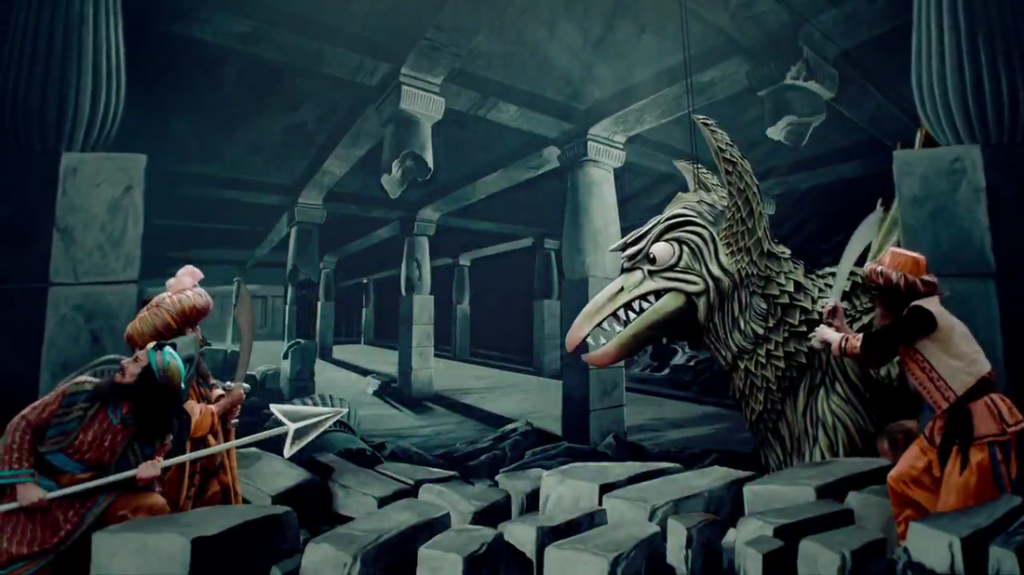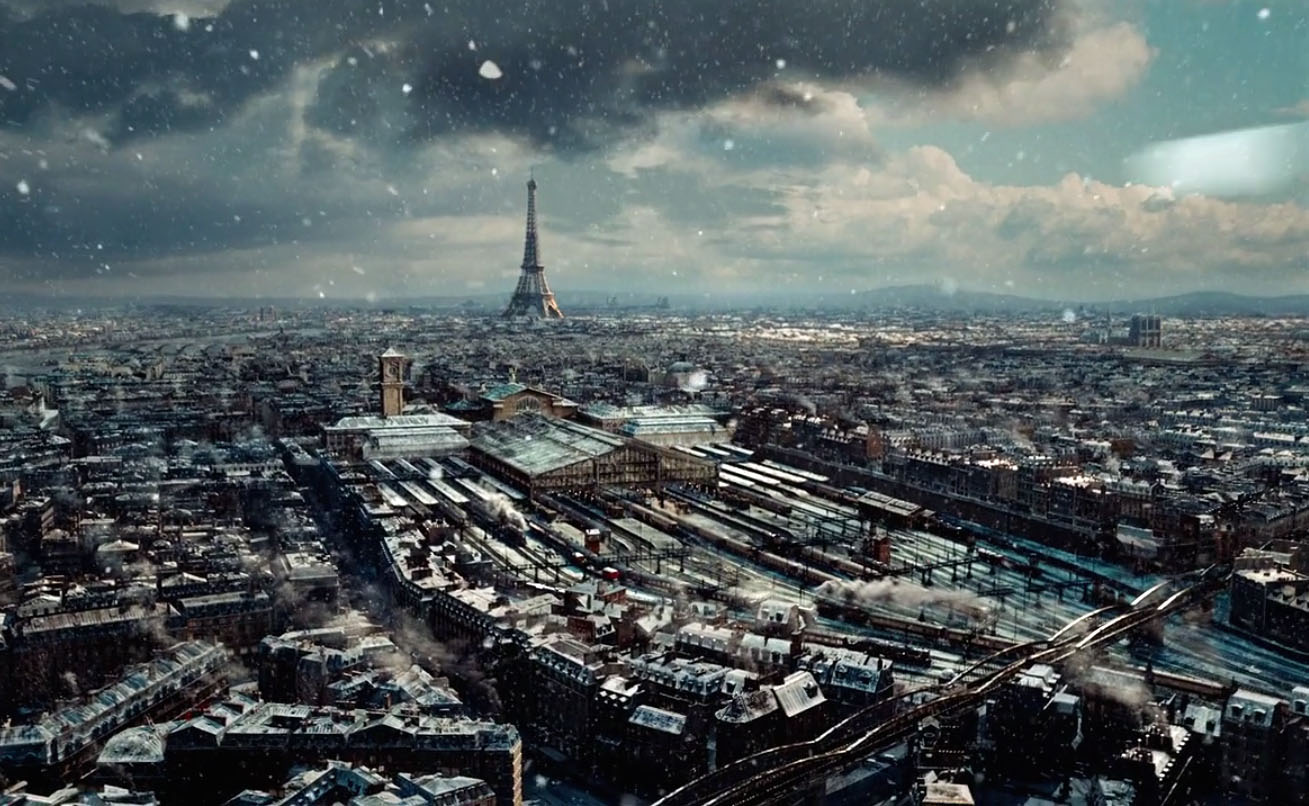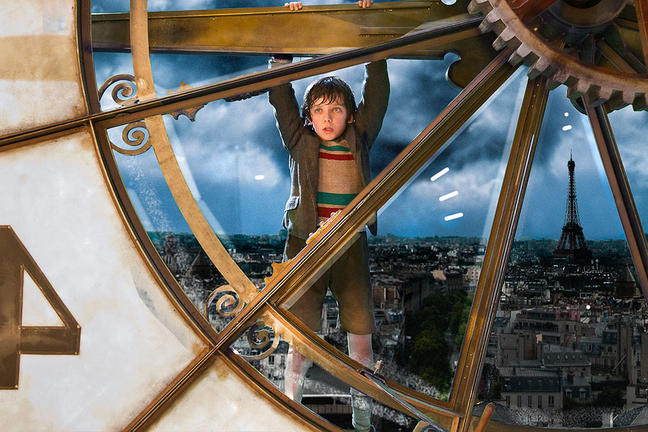In 2011, the Academy Award for Best Cinematography went to Robert Richardson for his work on Hugo, a 3D children’s film that just so happened to be directed by Martin Scorsese. It had serious competition that year, beating out films directed by David Fincher, Terence Malick, and Steven Spielberg, as well as that year’s Best Picture—The Artist. One look at that adaptation of a children’s book about the turn-of-the-century filmmaking and visual effects pioneer Georges Méliès and its Oscar is no surprise.

While a 3D film loaded with visual VFX might seem like a bewildering choice for a gritty auteur like Scorsese, he’s actually a perfect fit for the film. Centered on the wonder of filmmaking and the magic Méliès brought to the medium in its earliest years, walking film school Martin Scorsese was a no-brainer to helm the movie. In many ways, he was Hugo himself, a little boy enchanted by the wizardry of filmmaking and optical effects.
Scorsese, one of the most prominent and powerful of analog film’s champions, embraced Hugo’s story of experimenting with the medium, choosing to shoot the film not only digitally but also in 3D, an obvious first for the director. The result is widely considered to be the best use of three dimensions and one of the most beautifully shot 3D films of all time. Unlike most of its contemporaries, it even amazes on the small screen, maximizing the potential of 3D DVD.

Scorsese wasn’t interested in 3D as a gimmick, remarking, “I found 3D to be really interesting because the actors were more upfront emotionally. Their slightest move, their slightest intention is picked up much more precisely.” Together, he, DP Richardson, and the visual effects team used convergence, the moving of the image through the dimensions to the point of appearing as if it’s breaking past the screen and coming toward the audience to compose their shots. The film was built and storyboarded from the ground up, considering convergence and depth in every frame. Thinking ahead and factoring in the extra dimension even allowed filmmakers to move the images as opposed to moving the camera, giving the medium an entirely additional set of “camera moves” in addition to dollies and zooms.
Because Méliès essentially invented the concept of trick shots and using the camera to create images that aren’t being strictly photographed in reality, greater care went into the VFX of the film celebrating his life and work. Despite being at the forefront of computer imagery, digital filmmaking, and 3D technology, the visual effects team took multiple approaches to Hugo and worked closely with Richardson and the cinematography department.
This included using optical and in-camera effects, much like Méliès did himself. For the recreation of the great train wreck, the film used meticulously-detailed miniatures. When Sacha Baron Cohen is dragged by a moving train, the platform he’s standing on actually moves in the shot and creates the illusion it’s the train pulling him along. Practical effects like this are sprinkled throughout the movie both as playful nods to Méliès as well as to create another texture to a digitally shot spectacle, which could easily look flat and empty if not shot with care.

Scorsese and Richardson also paid homage to the period and history of film in their choice of color correction. The overall look and color of Hugo take their inspiration from the look of Autochrome, a color process the Lumière brothers pioneered when black-and-white was pretty much all there was. While also commenting on the early days of moviemaking for those who study film to geek out on, it also added to the mood and setting Scorsese was trying to set.
Richardson and Scorsese also relied on traditional camera techniques and framing to bring Hugo to life. A great deal of effort went into the complex mise-en-scene of the bustling train station in which the movie is predominantly set in. Framing and position are even more so important, considering the depth afforded by 3D. Scorsese also uses the language of staging to call back to earlier sequences in the film, such as when Hugo is hanging from a giant clock hand, repeating the visual from one of Méliès’ works seen earlier in the story.
Using a massive budget and state-of-the-art visual VFX to recreate 1930s Paris, Scorsese and Richardson made sure to show off their world with sweeping aerial shots. Aerial shots and bird’s eye views are also employed to orient the audience in the busy train station. Finally, understanding Hugo was intended first and foremost for kids, Scorsese uses low-angle shots looking up at the perspective of small children, especially in scenes of authoritative figures like Sacha Baron Cohen’s station agent.

For those who cite film as their passion as frequently as Martin Scorsese, Hugo is a must-watch. Using clever cinematography blended with amazing VFX and 3D, viewers are invited to enter a world both fantasy and historical and take a peek at a medium both scientific and magical. Hugo is a children’s movie, but it is for everybody—because anyone watching it will have the same child-like wonder Scorsese brings to even his darkest films.
